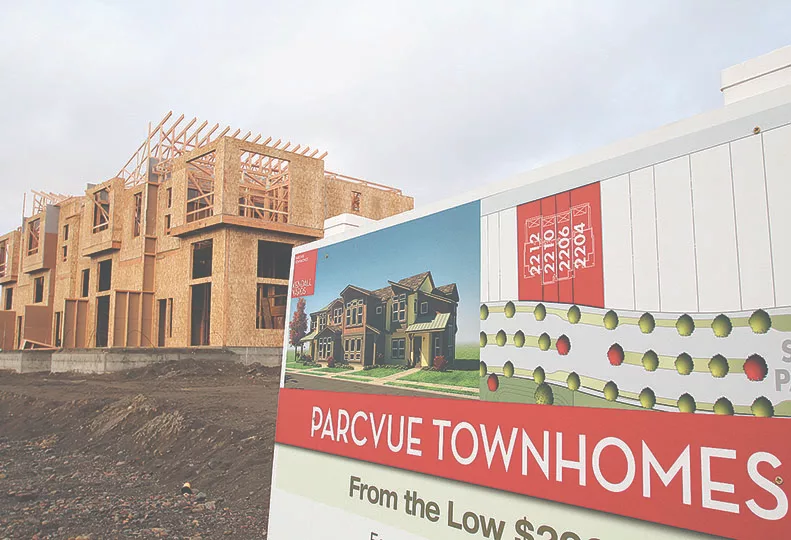
Home » Inland Northwest timber industry expects steady recovery in coming year
Inland Northwest timber industry expects steady recovery in coming year
-

December 19, 2013
The wood products sector is expecting continued, steady improvement next year, largely due to anticipated ongoing recovery in the U.S. housing market, industry observers say.
Shawn Church, editor of Eugene, Ore.-based Random Lengths, a publication that tracks lumber prices, says roughly 60 percent of its readers participating in a survey conducted earlier this year expected between 900,000 and 1.1 million housing starts nationally in 2014. This year, he says, the number of home starts nationwide is expected to total just over 900,000, which would be a solid improvement compared with the 2012 total of 781,000 housing starts.
“People who responded thought that there would be continued improvement over what we expect for this year,” Church says. However, he adds that the partial federal government shutdown over budget issues in October has delayed the release of September-October housing data by the U.S. Census Bureau, so forecasters haven’t received all the information they typically have by now.
“It makes it a little more difficult to judge how strong the market is going into the latter part of the year, but there is fairly widespread optimism,” he says.
The optimism is tempered by some uncertainty about issues that still might affect housing, he adds, including lingering federal budget issues, health care reform costs, and possible U.S. monetary policy changes that could trigger a rise in interest rates.
Church says the housing recovery so far is weighted more heavily toward construction of multifamily housing than single-family housing.
Spokane-based Northwest Farm Credit Services, in a report released in October, said the industry experienced pricing volatility earlier this year, but that demand for wood products continues to grow.
The agricultural lending cooperative says lumber and panel prices were pressured earlier by over-bought inventories and rising production. However, prices stabilized by September.
Russ Vaagen, vice president of Colville, Wash.-based Vaagen Bros. Lumber Inc., says the industry generally has experienced a good year, despite volatility in lumber prices during the spring. He says the price peaked at $450 per thousand board feet in early April, but that quickly declined by about 30 percent before returning to a steady climb.
“We knew that was a supply-demand correction because it had gone up too fast, too quickly,” Vaagen says. “Fortunately, the downward pricing pressure didn’t last long and we kind of had a steady pricing increase from midsummer on.”
The prices have held fairly steady at close to the $400 per-thousand-board-feet level in recent weeks. He adds, “It doesn’t look like housing is going to decrease significantly, so prices should remain steady for the next six months. In the short term, things look fairly stable.”
Potlatch Corp., of Spokane, in October reported third-quarter net income of $22.2 million, up from $18.6 million in the 2012 third quarter. Additionally, Potlatch posted third-quarter revenues of $157.9 million, up from $151.9 million in the year-earlier quarter.
“As we look into 2014, we expect housing starts to continue to rise and anticipate firmer log and lumber prices ahead,” said Michael Covey, Potlatch’s chairman and CEO, in the company’s Oct. 22 earnings release.
Spokane-based tissue and paperboard products maker Clearwater Paper Corp. reported third-quarter net income of $13.3 million, down from $19.1 million in the year-earlier period, attributing decline to $17.5 million in planned major maintenance costs. However, its third-quarter net sales rose to $487.8 million, compared with $480.2 million in the year-earlier period.
Latest News Special Report Real Estate & Construction Banking & Finance Manufacturing North Idaho
Related Articles


_web.webp?t=1758783848)
_web.webp?t=1757574393)